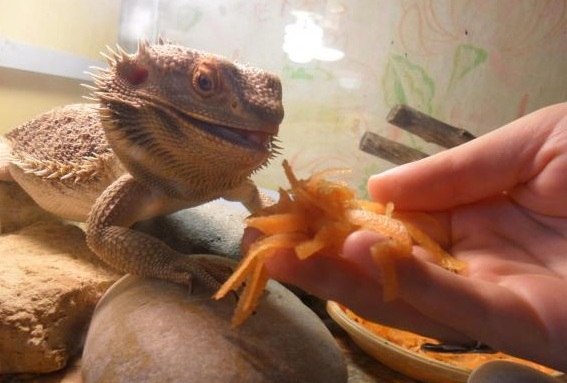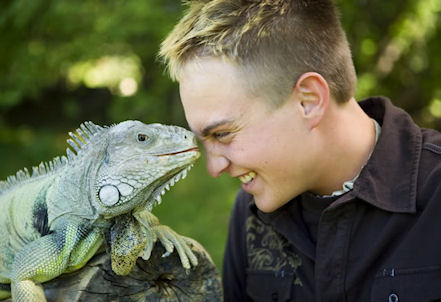
В 99% случаев новоиспеченные владельцы ящериц понятия не имеют, как подступиться к приручению. И даже если вы что-то об этом слышали, можно гарантировать, что это в основном чисто теоретические знания. В данной статье мы приводим советы и рекомендации от опытных владельцев ящериц, которые многократно проверяли их на практике. Более того, они уверяют, что эти же методы работают и в случае со змеями.
Можно ли приручить ящерицу?
Разумеется. Вы удивитесь, узнав, до какой степени ящерица может стать ручной. Считается, что в основном ящерицы лучше и охотнее взаимодействуют со своими хозяевами, чем змеи. Глядя им в глаза, можно получить какой-то отклик.
Итак, до какой степени ящерица может стать ручной? Это зависит от того, что вы вкладываете в понятие «ручное животное». Она никогда не будет ласкаться к человеку; если вы ожидаете именно этого, заведите собаку. Однако ящерица может с нетерпением ожидать вашего прихода, добровольно залезать к вам в руки и есть из рук. Они гораздо умнее, чем думает большинство людей. Если верить научным исследованиям, ящерицы могут считать до шести и проходить простые испытания, подразумевающие выбор, если они подкрепляются едой (например, нажать на рычаг определенного цвета, чтобы получить пищу).
В целом, понятия «ум» и «ручное животное»- очень субъективны, и десять человек могут дать десять разных ответов. Но одно можно утверждать смело: ящерицы могут быть очень контактными питомцами.
Развенчание мифов о приручении
Самый важный первый этап может быть совсем непростым. Для того, чтобы всерьез заниматься приручением ящерицы (или змеи), вам необходимо забыть все, что вы когда-то об этом слышали в зоомагазинах и читали в Интернете.
Сколько раз вы слышали о том, что залог успешного приручения ящериц ы – регулярно брать ее в руки? Это стопроцентный миф, более того, это вредоносное утверждение. Вы можете окончательно и бесповоротно разрушить свои взаимоотношения с рептилией, если будете трогать ее против воли. Ведь ящерице очень страшно, когда вы это делаете.
ы – регулярно брать ее в руки? Это стопроцентный миф, более того, это вредоносное утверждение. Вы можете окончательно и бесповоротно разрушить свои взаимоотношения с рептилией, если будете трогать ее против воли. Ведь ящерице очень страшно, когда вы это делаете.
Некоторые возражают на это: «Но, когда я беру в руки игуану, она совсем не сопротивляется, а лежит неподвижно!». Это и плохо. Значит, она напугана до такой степени, что застывает от ужаса. Это инстинктивная реакция рептилий, которую они применяют в дикой природе: застывают в надежде, что их не заметят.
Так как же нужно правильно приручать ящерицу?
Процесс приручения
Прелесть самого эффективного метода приручения в том, что он потребует от вас минимум усилий. Если вы будете следовать нижеперечисленным рекомендациям, очень скоро ваша ящерица станет ручной.

Чтобы оставить здесь комментарий, войдите или зарегистрируйтесь на сайте.
Авторизация